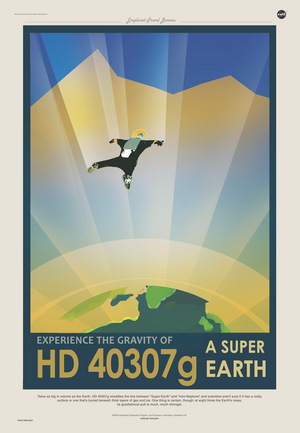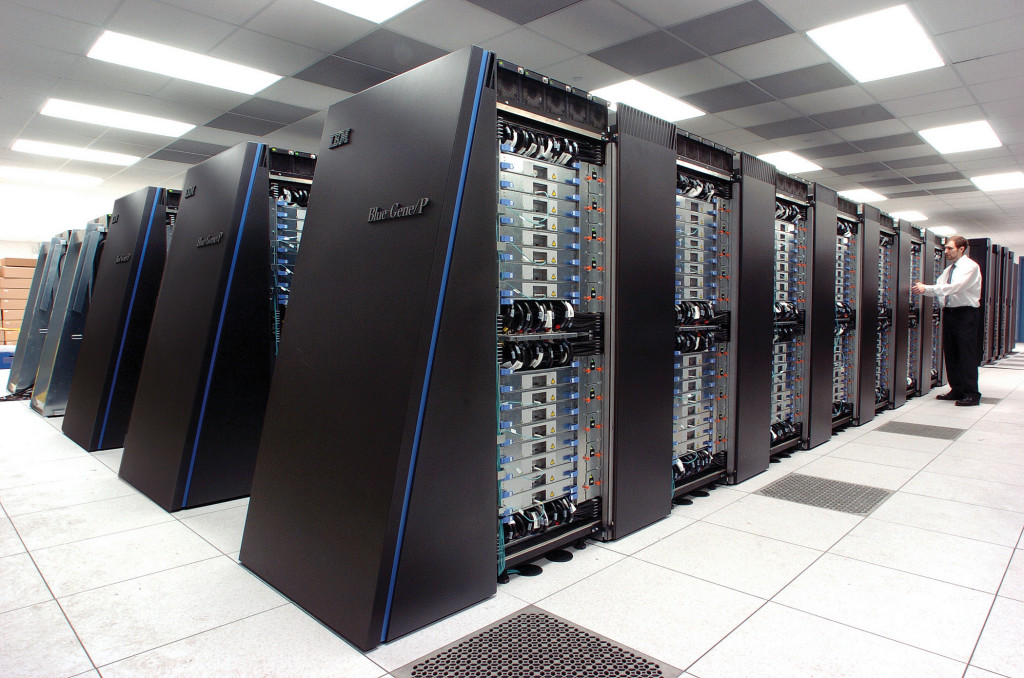-

-

-

-

-

-

-

-

-

-

-
-

-

-

-

-

-

-

-

-

-

-

-

-

-

-

-

-

-

-

-

-

-

-

-

-

-

-

-

-

-

-
-

-

-
 TOTW: Google's Project Ara Modular Phone May Be The Future Of SmartphonesOctober 30, 2014
TOTW: Google's Project Ara Modular Phone May Be The Future Of SmartphonesOctober 30, 2014 -

-

-

-

-

-

-

-

-

-

-

-

-

-

-
-
-

-

-

-

-

-

-

-

-

Posts tagged Nick Bostrom
The Simulation Argument Part #2 – The Hypothesis Explained
09 years
This is the second article in a two-part FFtech series on The Simulation Argument. If you haven’t already read the first article go HERE before reading the following.
In the previous FFtech article on the Simulation Argument, we established that Bostrom’s statement that the first proposition is false is a reasonable assumption. Just to remind you, these are the propositions, and one has to be true:
#1. Civilizations inevitably go extinct before reaching “technological maturity,” the time at which civilization can create a simulation complex enough to simulate conscious human beings. Meaning: no simulations.
#2. Civilizations can reach technological maturity, but those who do have no interest in creating a simulation that houses a world full of conscious humans. Meaning: no simulations. Not even one.
#3. We are almost certainly living in a simulation.
Now, on to the second postulate. Since that we have decided that there are quite likely alien civilizations in the universe that have developed an ability to create “ancestor simulations”, as Bostrom likes to call them, the second postulate says that the alien civilizations just have to interest in creating a simulation of fully conscious human beings. Most likely, a civilization creating a simulation of how humans lived before they reached “technological maturity” will be future humans, as it is less likely that we will have met an alien civilization before develop the capacity to create an ancestor simulation of our own, as the distance from another habitable stars is simply too far away.
(ABOVE: Some very cool illustrations of hypothetical travel ads for habitable planets found with the Kepler satellite)
However the simulation is created, it seems much more likely that at least one alien starts a simulation. If current trends continue, such as the a definitive interest in our ancestors shown in the multitude of historical studies, there will be plenty of people who would like to simulate how their ancestors lived. I know that I would find a simulation of a Greek town fascinating, for example. The idea that not a single person would want to create a simulation seems unlikely, and so therefore the second postulate is likely false.
So, Bostrom’s first postulate is probably false, and the second postulate is just plain unlikely by human (and, more arguably, alien) nature. Based off of that, do we now live in a simulation? Well, not yet. Just because and ancestor simulation exists doesn’t mean that you’re living in it. First, you have to consider the virtual “birth rate” of these simulations. Bostrom also supposes that it takes a lot more effort and time to create a real human than it would a virtual one once a sufficiently advanced technology is developed. Therefore, the ancestor simulation (or simulations) could have many orders of magnitude more virtual humans living inside it then are actual humans, living outside the computer and controlling the simulation. So, if there are thirty virtual humans for every real human, or even numbers up to 1,000 virtual humans to every human, that means the probability that you are one of the few “real” humans rather than a simulated human is very low.
And that, my friends, is the simulation hypothesis.
Of course, there are many assumptions made here, some clear and others subtle, some of which could be used to attack Bostrom’s argument. For instance, one of the major assumptions that Bostrom makes is what he calls “Substrate Independence”. Substrate Independence is the idea that a working, conscious brain can, as he writes in his original paper,
” …supervene on any of a broad class of physical substrates. Provided a system implements the right sort of computational structures and processes, it can be associated with conscious experiences. It is not an essential property of consciousness that it is implemented on carbon-based biological neural networks inside a cranium: silicon-based processors inside a computer could in principle do the trick as well.
Basically, Substrate Independence is the idea that consciousness can take many forms, only one of which is carbon-based biological neural networks. This form of Substrate Independence is pretty hard grasp, which is why Bostrom argues that the full form of Substrate Independence isn’t actually needed for an ancestor simulation. Really, the only form of Substrate Independence needed to create an ancestor simulation is a computer program running well enough to pass the Turing Test with flying colors.
Besides Substrate Independence, most of the rest of the Simulation Argument is fairly simple. Since we have already deduced that there is likely to be at least one ancestor simulation in existence, the likelihood that we are living in that simulation is pretty high. The logic behind this is that the ancestor simulation doesn’t have a set birth rate that can’t be manipulated. The simulation could have as many simulated people in it as they want – though this is stated as obvious, when it is also debatable — and there would be many orders of magnitude more simulated people than actual human people not in a simulation, and even more if there are multiple simulations running at the same time. The present-day parallel is to online video games MMORPGs, which are constantly getting bigger and bigger, with many more characters made in those games than real humans born every second.
Obviously, this argument is very speculative. Substrate Independence, ancestor simulations, the whole thing; it just all seems too far-fetched to be true. And, after all, Bostrom isn’t a computer scientist, he’s works at the Faculty of Philosophy in Oxford. But, that doesn’t mean his argument is false by nature, as in his original paper he goes into incredible detail about computing power, Substrate Independence, and even creates a mathematical formula for calculating the probability we live in a simulation. In fact, if we want to get technical, Bostrom categorizes what I have told you so far as the Simulation Hypothesis, and the full Simulation Argument being the probability equation Bostrom created, some “empirical” facts, and relation to unrefutable philosophical principles. If you want to read Bostrom brilliant albeit a little wordy paper, click HERE.
To sum it up: a man named Nick Bostrom created a series of logical “propositions” that, when examined closely, seem to suggest that there is a very high probability that we are living in a simulation. In fact, the probability is so high that to close his paper, Bostrom writes:
“Unless we are now living in a simulation, our descendants will almost certainly never run an ancestor simulation.”
You may take knowing this however you want. Personally, I think the simulation argument is one of the coolest things to ever come out of philosophy. And if it’s true, that we live in a simulation, that only makes it cooler. After all, we will never know for sure whether we live in a simulation or not, and either way, it doesn’t affect your life the slightest. You have no choice but to continue living your life as you did, maybe in a simulation, maybe not. All this shows is that as technology continues to develop at a rapid pace, we are getting closer and closer to even the wildest of science fiction technologies to become a reality.
Sources: https://www.youtube.com/watch?v=nnl6nY8YKHs http://www.simulation-argument.com/simulation.htmlThe Simulation Argument Part #1 – The First Proposition
09 years
This is the first article in FFtech’s series on The Simulation Argument. Enjoy, and check back for the following articles in the upcoming weeks.
*Warning – the following is incredibly speculative.*
Life seems real, right? This sounds like an obvious statement – of course life is real. That’s what life is. We are living, breathing humans, going about our daily lives, playing our part in the grand theater of life.
Or so we think.
Ok ok, I’ll stop being dramatic. This isn’t what you think; I’m not going to tell you that you’re a reincarnation of a turtle, or that you’re a ghost or spirit. But what I’m going to propose may seem even more preposterous. Brace for it. Ready? Using logical steps, some are arguing that they can prove the likelihood that we are living purely in a simulation is very high.
Whaaaat?? How could we possibly be living in a simulation, with just a bunch of code constituting our entire existence? This idea, famously popularized in the film The Matrix, now has a rigorous scientific argument, created by Nick Bostrom. For Bostrom however, instead of humans being controlled by aliens in a sci-fi thriller, the Simulation Argument conducts a sequence of logical steps in an effort to demonstrate that there is a greater chance than we might think that we are living in a simulation. The argument Bostom put together has three propositions, one of which must be true:
#1. Civilizations inevitably go extinct before reaching “technological maturity,” the time at which civilization can create a simulation complex enough to simulate conscious human beings. Meaning: no simulations.
#2. Civilizations can reach technological maturity, but those who do have no interest in creating a simulation that houses a world full of conscious humans. Meaning: no simulations. Not even one.
#3. We are almost certainly living in a simulation.
Hold it right there, you may be saying. It’s obvious that the first one it true, meaning we couldn’t be able to be in a simulation. That statement, that the first postulate is false, seems logical, but when put through a bunch of philosophical hurdles, doesn’t hold water. The reason that #1 is probably wrong is that the likelihood of sophisticated alien civilizations existing is actually quite high. Although beyond the scope of this article, the vast number of habitable planets, including planets outside of the Habitable Zone but that still may harbor life, is extremely large. Somewhere in the universe, intelligent life must have evolved. Once we have accepted that conclusion, it becomes less likely that this stage of development is unreachable by any one of these civilizations. From an evolutionary perspective, we as humans on Earth are arguably not too far away from being able to simulate a full chemical human mind, and within say 100-1,000 years we may have developed such a simulation similar to the one Bostom is hypothesizing.
One of the main principles of science, as the great Carl Sagan says in his quote The Pale Blue Dot, is the fact that humans on Earth aren’t special, chosen to be the singular life form in the universe. The Milky Way isn’t special at all – quite ordinary among galaxies in fact. If every other alien civilization becomes extinct within 100-1,000 years of our level of technological development, it would certainly make us one very special species. It seems much more likely that at least one civilization, whether it is future humans ourselves or an alien species, develops to this advanced level of sophistication. Thus after some considerable mental wrestling, the first postulate is deemed by Bostom to be most likely false.
But, as even Bostom himself admitted, we don’t have fully sufficient evidence against any of the first two arguments to completely rule them out. There are plenty of theories that favor a hypothetical “Great Sieve”, some event that will happen to every advanced civilization in the universe that drives them to extinction, and that will do the same to us once we reach that stage. Maybe it will be a technology that, once discovered, causes every civilization to ultimately destroy themselves. (e.g., genetic manipulation, nuclear power and weapons, bio-engineering diseases, etc.) The Great Sieve has also been used as an explanation for why there haven’t already detected some type of alien life forms, but the jury is still out on that one. Whatever the Great Sieve may actually be, we still don’t have our complete confidence in saying that the first postulate is 100% wrong. But, in the absence of any conclusive argument for a “Great Sieve”, we will for now follow along with Bostom and say the first postulate should be false.
This is the first big step in the Simulation Argument. The rest of the argument is built upon the idea that alien civilizations could actually develop and use ancestor simulations. This isn’t a small step to make, and it draws in many other philosophical complications, for instance, is creating a conscious computer program as easy as replicating a human brain in code, or is there more to it? I’ll get into this and more in the next installment of FFtech’s Simulation Argument series, so check back soon.
Sources: https://www.youtube.com/watch?v=nnl6nY8YKHs http://www.simulation-argument.com/simulation.html




